A well-written Continuous Deployment (CD) pipeline ensures that on every merge to a release branch, an artifact is created and deployed to the correct environment.
While working with containerized applications the CD pipeline needs to contain the following steps
- Code checkout
- Install dependencies
- Build the image
- Push to a container registry
- Use the latest image for the next deployment
- Trigger a new deployment
In this tutorial, we will write a CD pipeline that does all of the above tasks using Github Actions.
We will deploy our application using AWS ECS.
AWS ECS is a fully managed container orchestration service from AWS. It helps you easily deploy, manage and scale containerized applications.
This tutorial assumes that you have a sound understanding of:
It also makes the implicit assumption that your application is already deployed on ECS.
At the end of this tutorial you will be able to automate your deployments on merge to a release branch.
In this tutorial I will take you through how to:
- Trigger a workflow on merge to a release branch.
- Build and push the image to the Elastic Container Registry
- Update the task-definition using the newly created image
- Deploy your application to the new environment
Starter Project
Please clone the following repository: https://github.com/wednesday-solutions/ecs-cd-starter
Setup database connection
Update the relevant database connection details in the .env.development
Add secrets
We need to add the following secrets
- AWS_ACCESS_KEY_IDACCESS_KEY_ID
with access to deploy - AWS_SECRET_ACCESS_KEY
Associated SECRET_ACCESS_KEY - AWS_REGION
Region in which the cluster is deployed - AWS_ECR_REPOSITORY
Name of the ECR repository that we will push the image to.
Step 1
Add the AWS_ACCESS_KEY_ID and AWS_SECRET_ACCESS_KEY secrets.
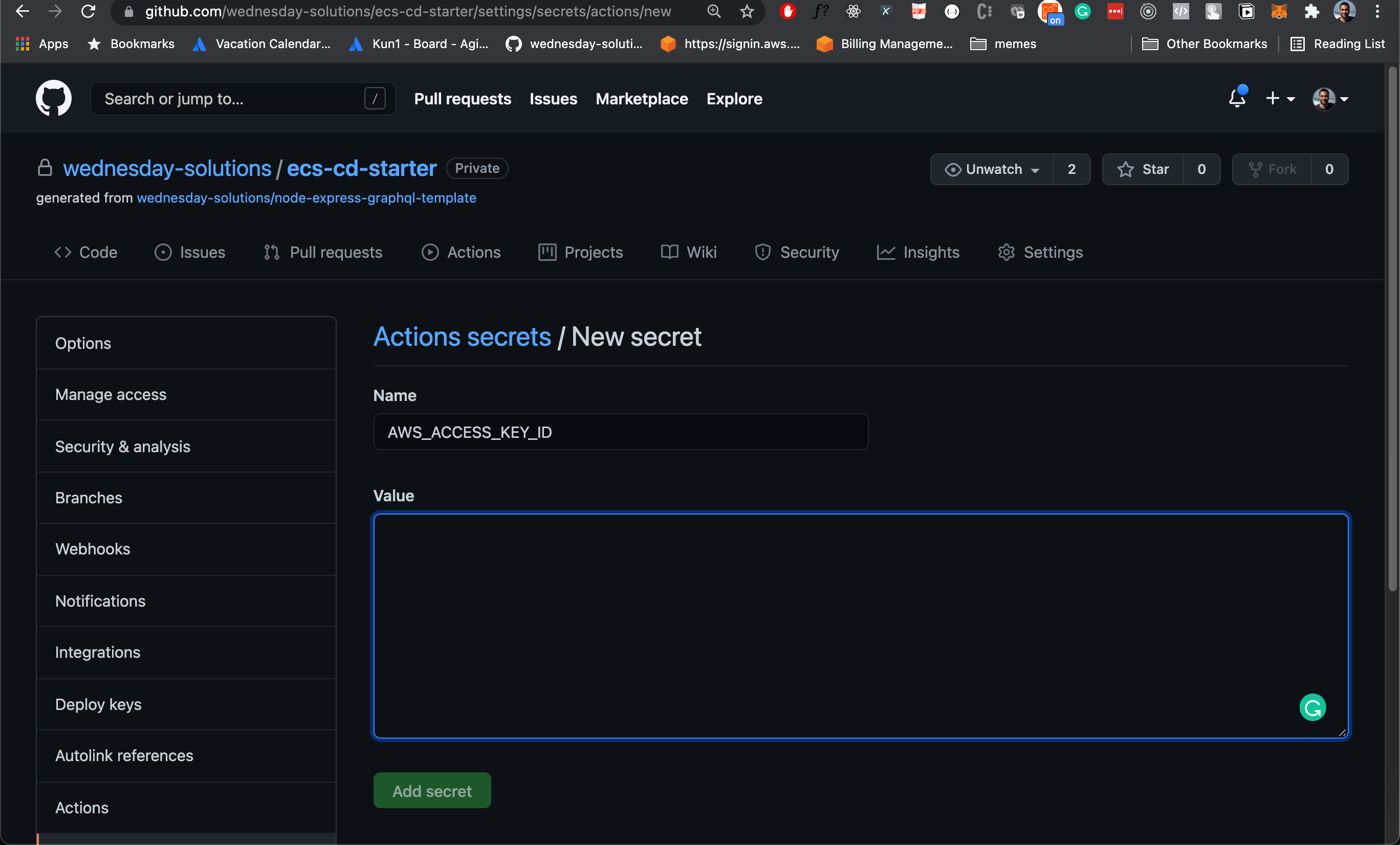
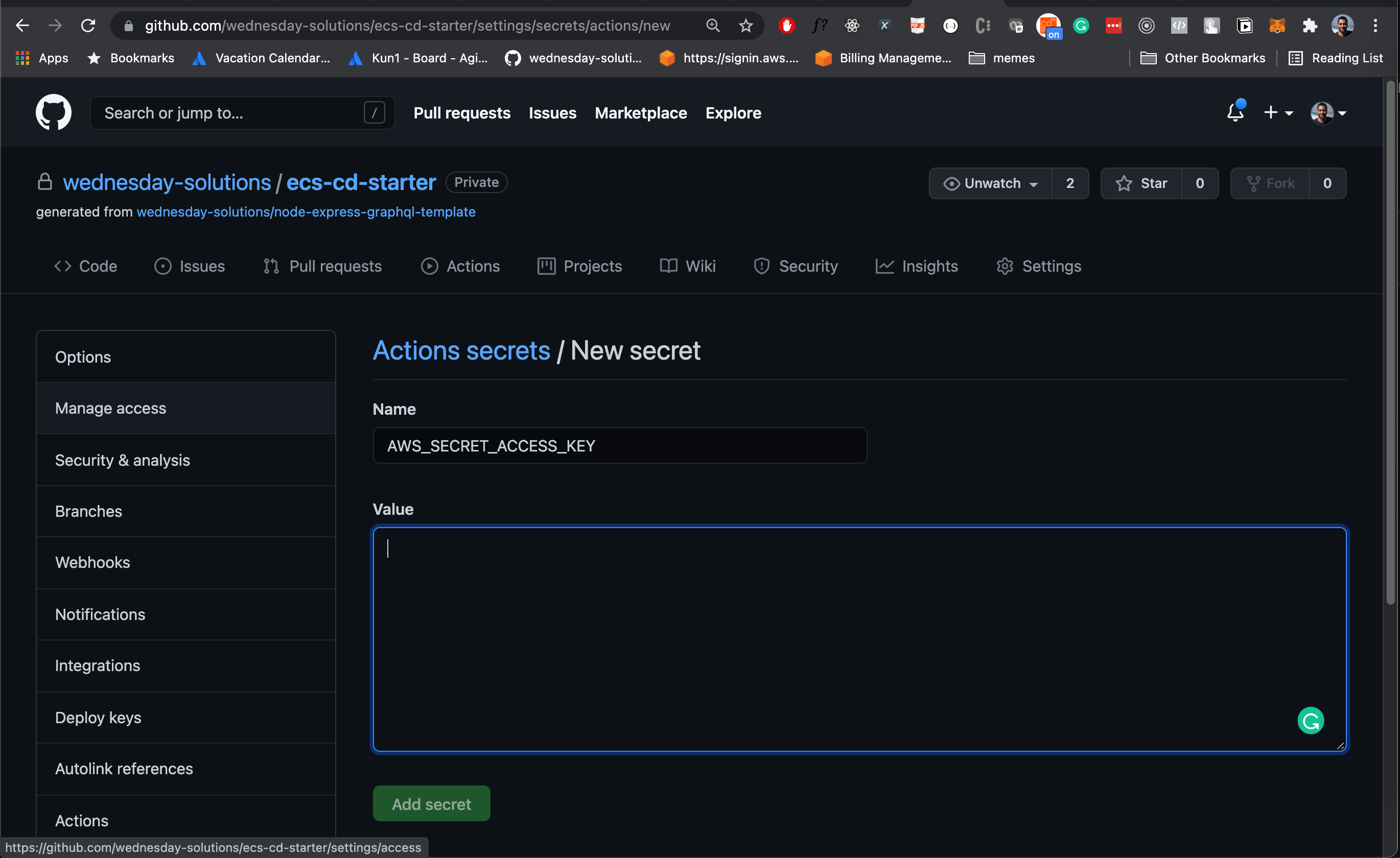
Step 2
Add the AWS deployment region

Step 3
Get the repository name from the AWS console and add it as a secret.

I have omitted the -dev since that represents the stage.
We will be using the same workflow to deploy to multiple environments and will hence infer the stage at runtime.
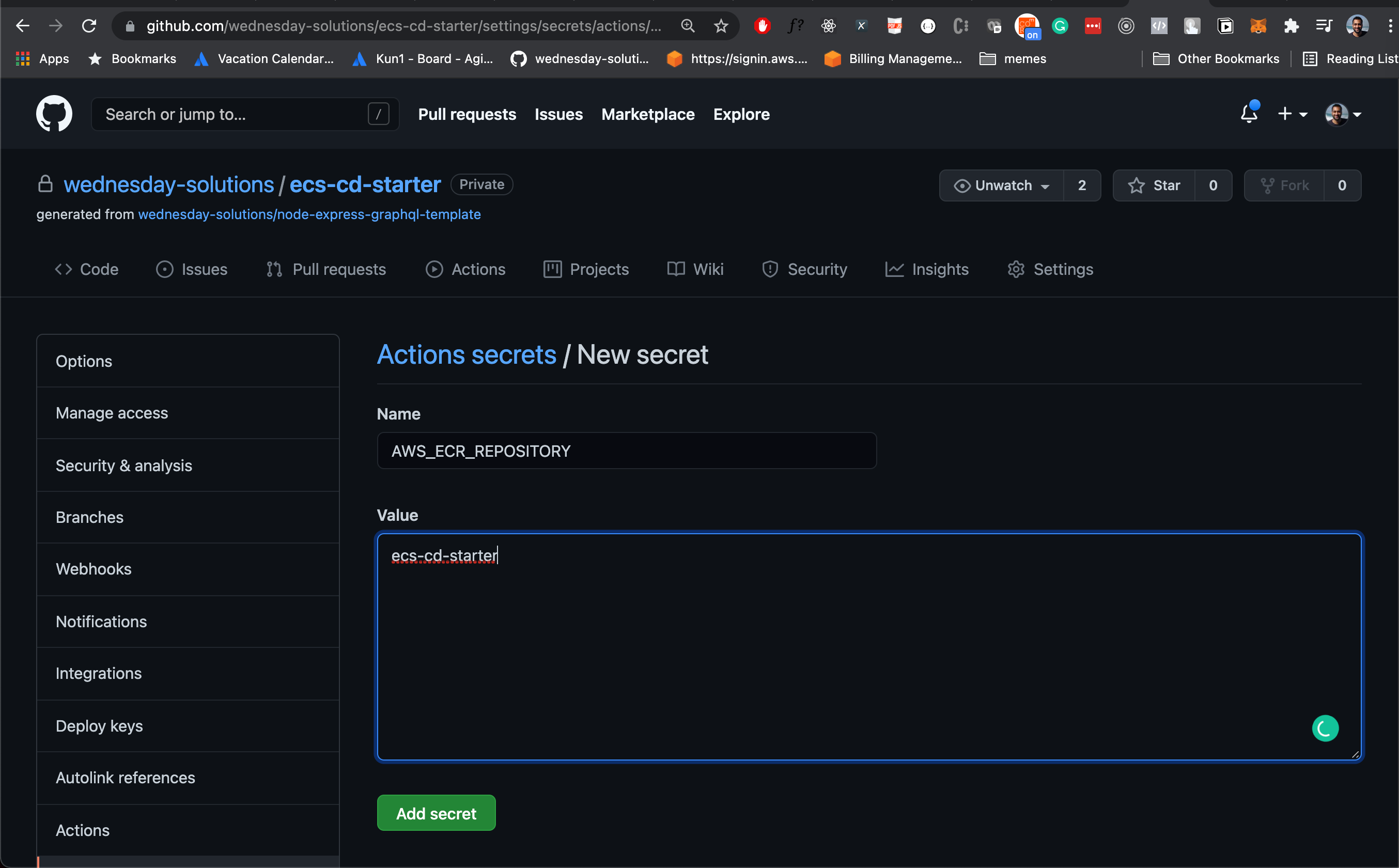
Before you move on, here’s a tip top C Execs already know: LeadReads is your source for exclusive digital product insights and stories. Don’t miss out!
Join here.
Create the task-definition.json for all the environments
Step 1
Go to the following URL: https://ap-south-1.console.aws.amazon.com/ecs/home?region=ap-south-1#/taskDefinitions
I'm using ap-south-1 as the AWS region.
Please change the URL according to the region you are in
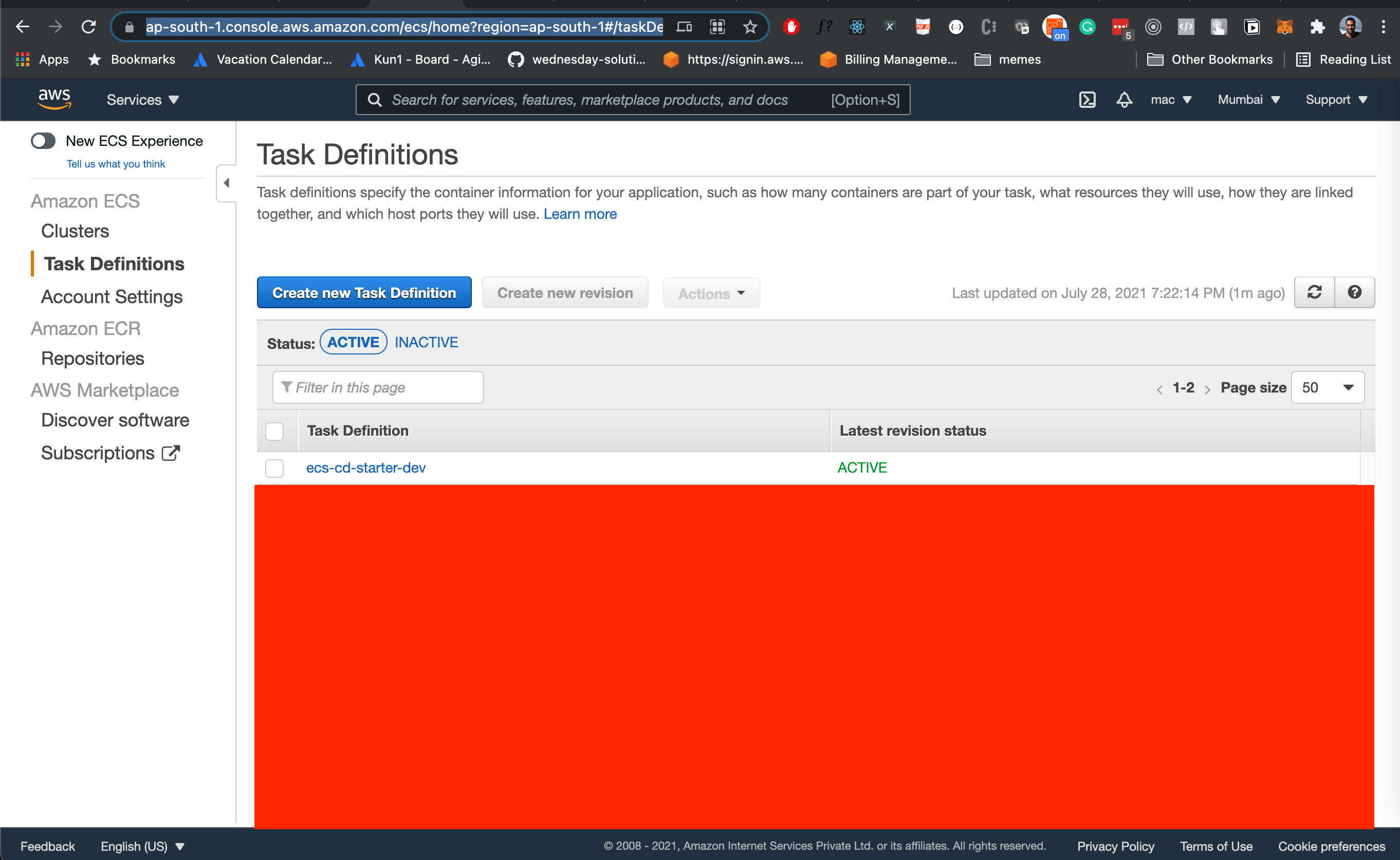
Step 2
Select the task definition for your environment and project. In my case its the ecs-cd-starter-dev

Step 3
Select the latest revision and go to the JSON tab
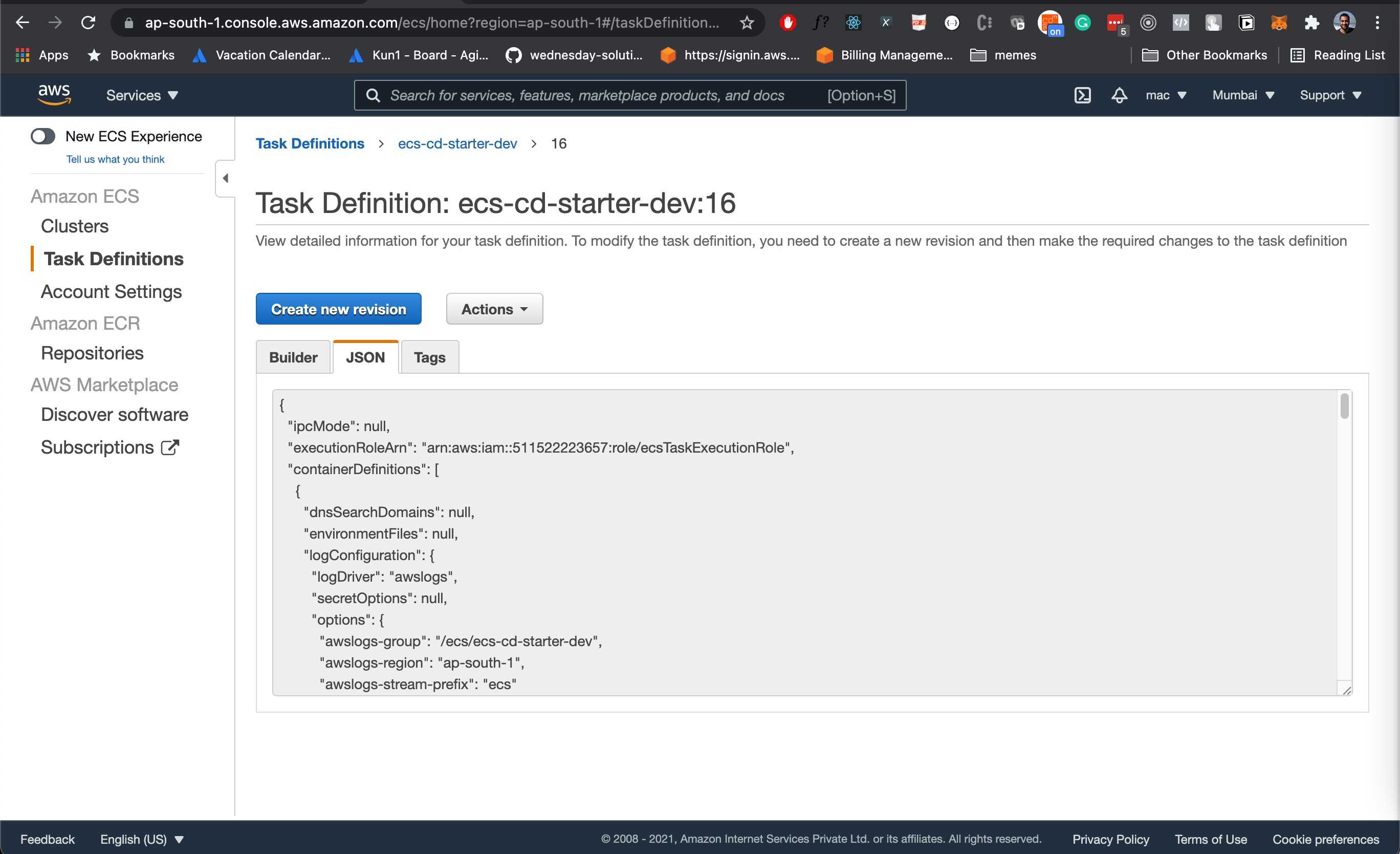
Step 4
Copy the JSON. Run the following snippet in the terminal.
Paste the JSON from the AWS console into the newly created file. I use dev.json since dev is my my default branch name. I want the code that is pushed to this branch deployed to the dev environment. You will need to repeat this step for the qa and production environments.
Trigger the workflow to run on merge to a release branch
Step 1 - Create workflow
Create a new workflow for continuous deployment in the .github/workflows folder
Step 2 - Setup triggers
Identify your release branches. The first release branch will be your default branch which should also be the branch that the team typically raises a pull request to when they want to add a new feature.
In my case this is the dev branch. Typically you would have 2 more environments.
- qa
- production
So let's trigger this workflow whenever there is a push on one of these branches.
Paste the above code into the newly created cd.yml file
Step 3 - Checkout code
This step pulls the latest code.
Step 4 - Get branch name
Get the current branch name. This step will fetch the current git branch name and store it. It can now be accessed like so: ${{steps.vars.outputs.stage}}
Step 5 - Configure AWS Credentials
Configure AWS Credentials and region. Use the values from Github secrets to configure the AWS Credentials. To get a better understanding of all of the configuration options please go through the documentation here.
Step 6 - Login to ECR
Use the aws-actions/amazon-ecr action to log in to AWS ECR.
To get a better understanding of all of the configuration options please go through the documentation here: https://github.com/aws-actions/amazon-ecr-login#usage
Step 7 - Build tag and push image to ECR
We now need to build the docker image, tag and push it to AWS ECR. Use the commit hash to tag the image.
Step 8 - Render the task definition
We create a new task-definition revision by updating the value of image. We will point to the image that we just pushed to ECR.
- The task-definition folder will contain task-definitions for all of the environments. I create json files with the name of the environment and access it using ${{steps.vars.outputs.stage}}.json in the workflow
- I name my containers with the stage as the suffix. I reference it using <container-name>${{steps.vars.outputs.stage}}.json in the workflow.
- We reference the image that we just pushed to the ECR registry.
Step 9 - Deploy to ECS
We use the latest revision of the task-definition that we just created to deploy the application to ECS. I use the same -branchName suffix when naming my service and cluster.
Step 10 - Logout of ECR
Once the deployment is done logout of ECR.
Where to go from here
Now that you have setup a CD pipeline to deploy your application to ECS I would recommend reading our article on how to execute batch jobs in a multi-container environment.
I hope you enjoyed this tutorial on how to create a CD pipeline to deploy your ECS application. If you have any questions or comments, please join the forum discussion on Twitter.
Want a team of experts to do this your app? Book a call with us from here!







